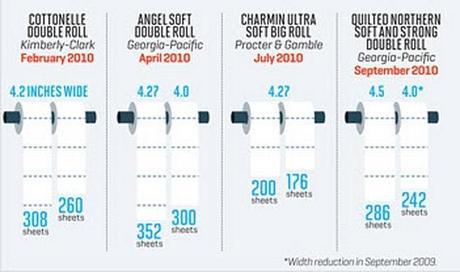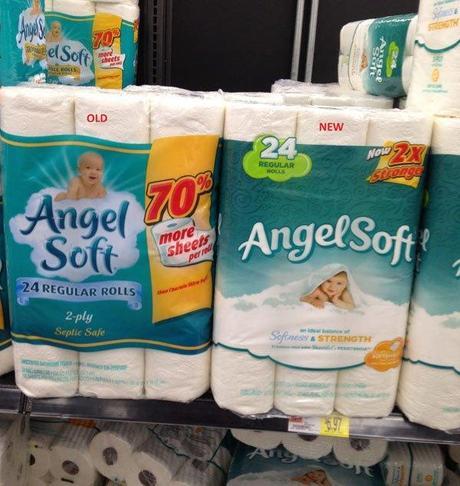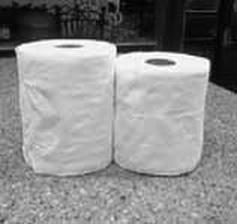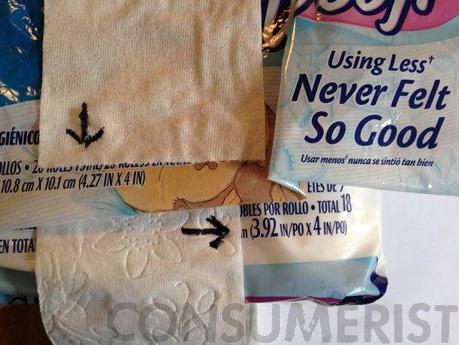If you feel like you’ve been replacing toilet paper rolls like mad, it’s time to give some well-deserved apologies to your kids. They haven’t been the ones using the rolls to Teepee other homes in the neighborhood.
Feel like your toilet paper holder has been shrinking? It may not be a figment of your imagination. Many prominent brands have begun reducing the width of toilet paper rolls due to pressing constraints. You’ll have to do more than read between the lines to get to the bottom of this one.

This shows just how much popular brands have been reducing the size and quantity of sheets. Courtesy of Curiouscalico.
The TP Strategy that’s Causing a Stink
Desheeting is the process of reducing the number of sheets of toilet paper or tissues while retail prices remain constant. It involves a practice where toilet paper (TP) companies shrink the volume of product in a way that is seemingly unnoticeable unless packaging specifications are compared side to side. But don’t think that this is something new. You may already be aware of this same volume-shrinking tactic being used in the food industry. Here are two examples. Did you catch the changes?
- Snicker bars used to weigh 2.07 ounces and now measure 1.86 ounces. “Hungry? Inflate.”
- Tropicana Pure Premium orange juice was previously sold in 64 ounce cartons. This changed in 2010 with the introduction of a new 59 ounce carton.
This practice has not be singularly employed by a single TP manufacturer either. This has been seen by most major brands including Charmin, Cottenelle, Quilted Northern, Angel Soft, and Scott. Angel Soft in particularly was found reducing sheeting size while simultaneously updating packaging. Coincidence?

On the left you can see Angel Soft packaging before the change and the new packaging on the right.
Similarly, Cottenelle rolls decreased by 5.7%. “Double rolls” (2-ply) have a count of 166-216 sheets which pales in comparison to the previous count of 176-230 sheets per roll.
Reaction from Consumers
It’s not clear how consumers are reacting to this. I haven’t witnessed any riots in the streets over TP (although that would be quite the site), but many are alarmed when they learn of the downsize. Consumer watch dog groups like Consumerist have reported these findings and it’s also been documented in the Wall Street Journal.
According to a Nielsen survey, most consumers prefer to see products bundled in larger economy sizes at a lower cost per unit. A mere 12% said that they would prefer prices to remain constant while quantity/size decreased. If this is at all telling, consumers may end up with the short end of the sheet on this one. One consumer noticed a change when his kids were playing with empty TP rolls.

Check out the difference between these rolls of Quilted Northern rolls. Striking isn’t it. Images courtesy of Consumerist.
Some have referred to desheeting as “Grocery Shrink Ray” or simply “Shrink Ray.” In most cases, the size of toilet paper sheets have shrunk from 4 1/2 inches to 4 1/4 inches. Some have found the width of some brands to be under 4 inches.
Boring Yet Amazingly Stupefying Facts About Toilet Paper
- The average person uses 46 sheets of toilet paper each day, taking 5 trips to the bathroom.
- The Toilet paper industry is a $10.6 billion market.
- The average household will flush 8,000 sheets of toilet paper down the drain this year.
Justification for Desheeting
While this may seem like a deceptive practice, is it really? TP companies claim that the reduction in size addresses aims to reduce consumption of natural resources, improve product quality, and simple economics. It must be noted that the cost of raw materials has increased. Eucalyptus pulp is a key material in tissue paper. It’s prices rose 3% in 2013. Prices of virgin pulp aka Northern bleached softwood kraft are up by 9% according to Barclays.
So how is all of this affecting tissue companies? Well, Kimberly-Clark reported a profit increase of 5.6% to $526 million while overall sales revenue stagnated. Of course, this single report doesn’t consummate the gains of toilet paper manufacturers as a whole. Rather it is an example.
“building bulk, providing consumers with better, stronger tissue so that you need fewer sheets to get the job done.” – Kimberly-Clark (Kleenex and Cottenelle) CFO Mark Buthman

This picture demonstrates the difference in toilet paper sheet size. As you can see on packaging, dimensions used to read 4.27 in x 4 in which now reads 3.92 in/po x 4 in.
In the midst of murmurs of smaller toilet paper rolls (oh no!), manufacturers have pushed to produce thicker and bulkier sheets in an effort to increase efficiency. This means that you need fewer sheets during every trip to the bathroom. Maybe this is in line with Charmin’s slogan; “Using Less Never Felt So Good.” What do you think? Would you put your tush on the line?
About the Author
Cheryl Khan is a freelance writer with an investigative mind and an itch for the truth. While she (just like everyone else) uses some of the aforementioned brands, she wonders how this type of tactic could be affecting everyday consumers on a daily basis. What are your thoughts? Share them with me in the comments below or contact me @SuperInteriors.
